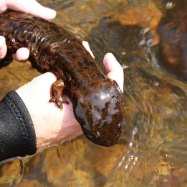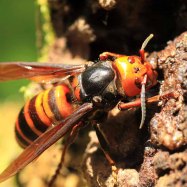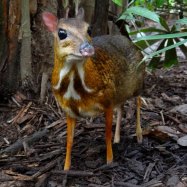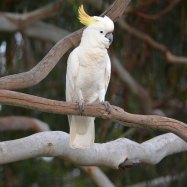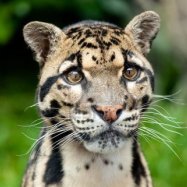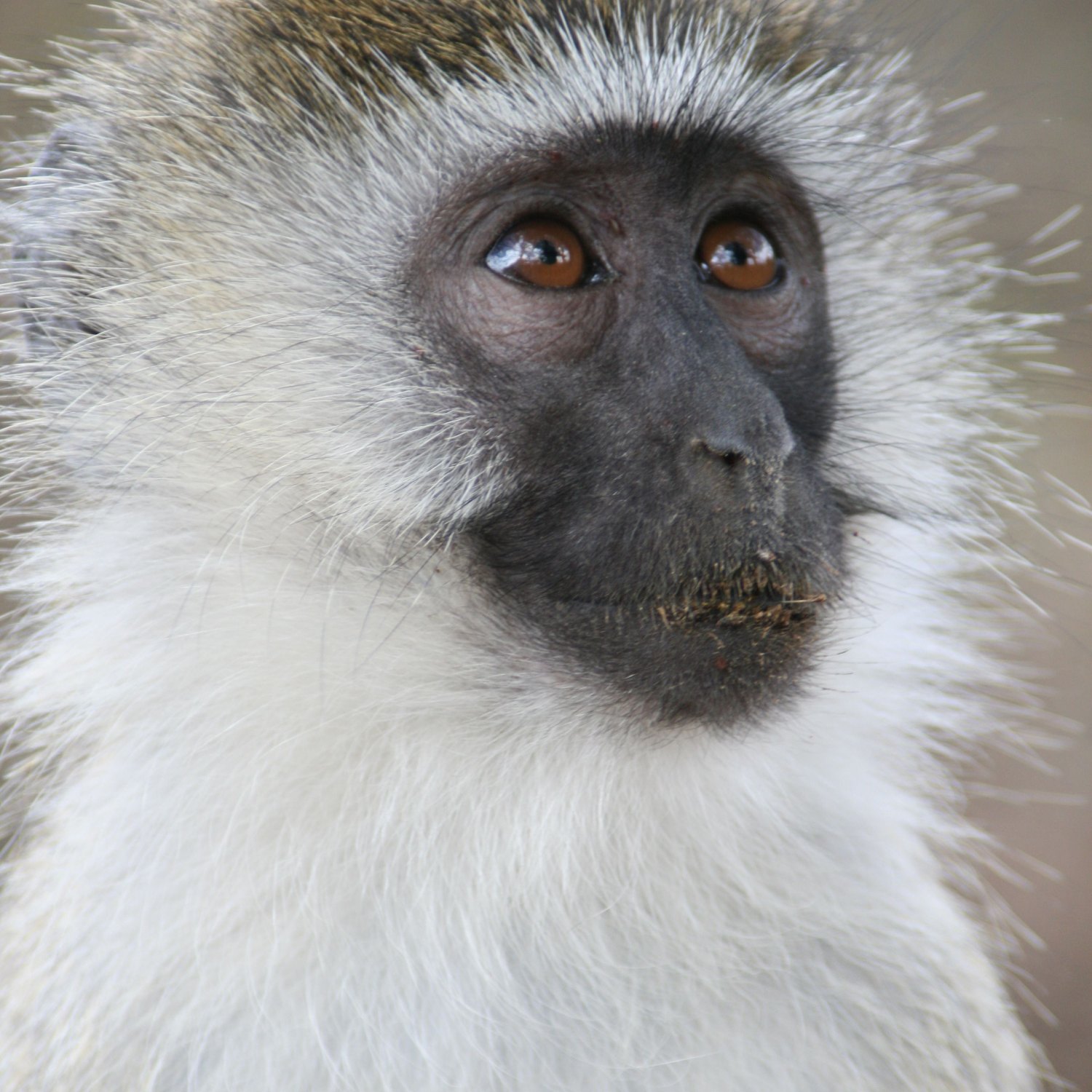
Vervet Monkey
12 to 24 inches
The Vervet Monkey, found in Sub-Saharan Africa, is a medium-sized and slender primate known for its unique blue face. They are social animals, living in large groups and communicating through various vocalizations. With a length of 12 to 24 inches, they are active and agile, often leaping through trees. Their family, Cercopithecidae, includes other common monkey species like baboons and macaques. Keep an eye out for these curious and intelligent animals on your next safari adventure. #VervetMonkey #SubSaharanAfrica #Cercopithecidae
Animal Details Summary:
Common Name: Vervet Monkey
Kingdom: Animalia
Habitat: Woodlands, Savannas, Forests
The Fascinating Vervet Monkey: A Primate of Many Talents
The Vervet monkey, also known by its scientific name Chlorocebus pygerythrus, is a highly intelligent and adaptable primate found throughout Sub-Saharan Africa. With its distinctive grayish-brown fur and white belly, the Vervet monkey is known for its unique coloration and remarkable abilities. In this article, we will delve into the fascinating world of the Vervet monkey, exploring its physical characteristics, behavior, and role in the African ecosystem.A Primate of the Animal Kingdom
The Vervet monkey belongs to the animal kingdom, the largest and most diverse of all the five kingdoms of living organisms Vervet Monkey. As a member of the Chordata phylum, the Vervet monkey shares certain characteristics with other vertebrates, such as possessing a spinal cord, backbones, and a well-defined head. Within the mammal class, the Vervet monkey belongs to the order Primates, which includes apes, lemurs, and monkeys.Physical Characteristics
The Vervet monkey is a medium-sized primate, with a slender and agile body shape. On average, they range in length from 12 to 24 inches and weigh between 7 to 15 pounds. Their fur is typically grayish-brown, but they may also vary in color, with some individuals sporting golden or reddish hues. One of the most striking features of the Vervet monkey is its bright blue scrotum, which serves as a display of its sexual readiness to potential mates.A Versatile Diet
The Vervet monkey is an omnivorous creature, meaning that it eats both plants and animals. Its diet mainly consists of fruits, seeds, leaves, and insects, making the Vervet monkey a valuable contributor to its ecosystem's overall balance. As foraging animals, Vervet monkeys play an essential role in seed dispersal and nutrient recycling, contributing to the health of the African forests and savannas Viper Shark.Habitat and Geographical Distribution
Vervet monkeys can be found in a wide range of habitats, from woodlands and savannas to forests and even on the edges of human settlements. They are highly adaptable and can live in various elevations, from sea level to high altitude mountains. However, Vervet monkeys are primarily concentrated in Sub-Saharan Africa, where they can be seen roaming in groups referred to as troops.Behavior and Social Life
The Vervet monkey is a highly social creature that lives in communities of up to 50 individuals. Troops consist of both male and female Vervet monkeys of varying ages, with a complex hierarchy where the most dominant male and female rule over the others. Within the troop, Vervet monkeys communicate through various vocalizations, such as grunts, barks, and shrieks, to convey specific messages and maintain social harmony.Vervet monkeys are also known for their playful and curious nature, often engaging in various social activities such as grooming, wrestling, and chasing each other. They spend most of their daytime hours foraging for food and resting in the trees at night, where they are better protected from predators such as leopards, eagles, and humans.
Country of Origin and Conservation Status
Vervet monkeys are native to Sub-Saharan Africa, inhabiting various countries such as Kenya, Tanzania, South Africa, and Zimbabwe. They have also been introduced to other parts of the world, such as the Caribbean, where they were brought as pets but later released and formed invasive populations.Unfortunately, Vervet monkeys face several threats, with habitat destruction due to human activity being the most significant. As the forests and savannas are cleared for agriculture, logging, and urbanization, the natural habitat of the Vervet monkey shrinks, leaving them vulnerable to extinction. Other threats include hunting, both for food and for the exotic pet trade, and accidental poisoning from pesticides used in agriculture.
According to the International Union for Conservation of Nature (IUCN), the Vervet monkey is currently classified as least concern, meaning that it is not at significant risk of becoming endangered. However, continued efforts are needed to ensure its survival, such as promoting sustainable land use practices and enforcing wildlife protection laws.
The Role of Vervet Monkeys in African Culture
Vervet monkeys have been intertwined with African culture and mythology for centuries, appearing in traditional stories and artwork. In some African cultures, Vervet monkeys are seen as tricksters and have been the subject of several fables and tales. They are also considered sacred in some cultures, and harming them is believed to bring bad luck.Besides their cultural significance, Vervet monkeys also play a vital role in research and education. Due to their similarities to humans, Vervet monkeys have been extensively studied in the fields of medicine, neurology, and psychology, providing valuable insights into human behavior and cognition.
Conclusion
The Vervet monkey is a remarkable primate that has managed to adapt and thrive in diverse habitats throughout Sub-Saharan Africa. With its unique physical characteristics, versatile diet, and complex social life, it is no wonder that this little monkey has captured the attention of researchers, artists, and storytellers alike. As we continue to learn more about the Vervet monkey, it is crucial to recognize and protect its critical role in the African ecosystem and culture. With sustained efforts towards conservation and education, we can ensure that these incredible creatures continue to thrive for future generations to enjoy.

Vervet Monkey
Animal Details Vervet Monkey - Scientific Name: Chlorocebus pygerythrus
- Category: Animals V
- Scientific Name: Chlorocebus pygerythrus
- Common Name: Vervet Monkey
- Kingdom: Animalia
- Phylum: Chordata
- Class: Mammalia
- Order: Primates
- Family: Cercopithecidae
- Habitat: Woodlands, Savannas, Forests
- Feeding Method: Omnivorous
- Geographical Distribution: Sub-Saharan Africa
- Country of Origin: Multiple countries in Africa
- Location: Sub-Saharan Africa
- Animal Coloration: Grayish-brown with a white belly
- Body Shape: Medium-sized and slender
- Length: 12 to 24 inches
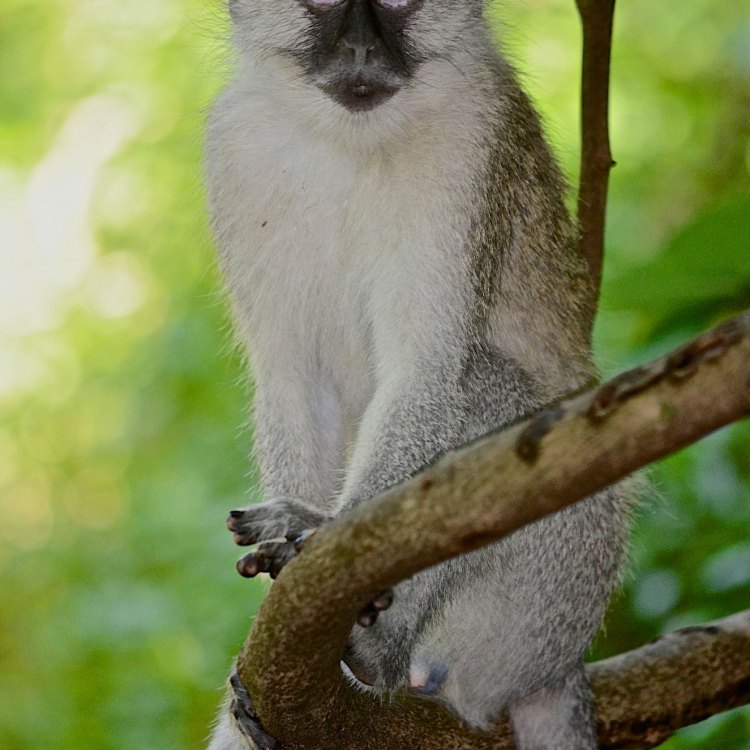
Vervet Monkey
- Adult Size: 6 to 10 kg
- Average Lifespan: 10 to 11 years
- Reproduction: Sexual
- Reproductive Behavior: Polygynandrous (multiple males mate with multiple females)
- Sound or Call: Varied calls including alarm calls, grunts, screams, and chatters
- Migration Pattern: Nomadic within their home range
- Social Groups: Troops of 10 to 50 individuals
- Behavior: Diurnal and arboreal
- Threats: Habitat loss, hunting, and capture for the pet trade
- Conservation Status: Least Concern
- Impact on Ecosystem: Seed dispersal
- Human Use: Hunted for bushmeat and used in traditional medicine
- Distinctive Features: Blue face and hindquarters, black face, and long tail
- Interesting Facts: Vervet monkeys have a complex vocal communication system and are known to show altruistic behavior towards group members.
- Predator: Larger carnivores such as leopards and eagles
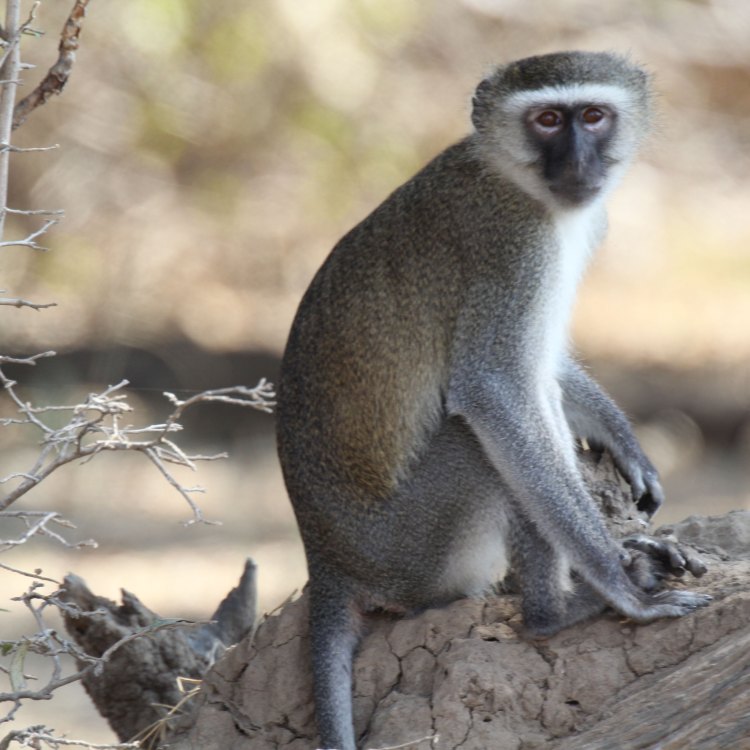
Chlorocebus pygerythrus
The Vervet Monkey: A Playful Primate with a Complex Social Structure and Vital Role in the Ecosystem
The African savanna is a vast and diverse landscape that is home to various species of animals. Among them is the Vervet Monkey (Chlorocebus pygerythrus), a highly intelligent and social primate that is native to the African continent. With its distinctive blue face and hindquarters, black face, and long tail, the Vervet Monkey is a well-known and loved species. But there is much more to this playful primate than meets the eye PeaceOfAnimals.Com.Adult Vervet monkeys typically weigh between 6 to 10 kg and have an average lifespan of 10 to 11 years. These monkeys are sexually reproductive, with both males and females reaching sexual maturity at around three to four years of age. However, their reproductive behavior is quite unique, as they are polygynandrous, meaning multiple males mate with multiple females. This type of behavior is common among primates and is believed to promote genetic diversity within the population.
One of the most striking features of Vervet Monkeys is their vocal communication system. These monkeys have a wide range of calls that they use to communicate with each other, including alarm calls, grunts, screams, and chatters. Each call has a specific meaning, and they are able to differentiate between different types of calls and respond accordingly. This complex vocal communication system is essential for their survival in the wild, as it allows them to warn their troop of predators or other potential threats.
Vervet monkeys are also nomadic creatures, moving within their home range in search of food and water Velociraptor. They are diurnal and arboreal, meaning they are active during the day and spend most of their time in trees. Troops can consist of 10 to 50 individuals, led by a dominant male and female. These social groups are very cohesive, with members grooming each other, playing, and sharing food. This close social bond also extends to the care of their young, with other members of the troop assisting in raising and protecting the infants.
Unfortunately, like many other species, the Vervet Monkey is facing threats to its survival. Habitat loss, hunting, and capture for the pet trade are some of the most significant challenges these monkeys face in the wild. Due to their intelligence and playful nature, they are often kept as pets in some African countries. This practice not only leads to the decline in their population but also has negative consequences for their well-being as they are not meant to be kept as domesticated animals.
Despite these challenges, the Vervet Monkey is currently listed as "Least Concern" on the IUCN Red List of Threatened Species. This is due in part to their widespread distribution and large population. However, conservation efforts are still essential in protecting this species and its vital role in the ecosystem.
One crucial contribution that Vervet Monkeys make to their ecosystem is seed dispersal. As they travel throughout their home range, these monkeys eat various fruits and seeds, which they then spread through their feces. This process allows seeds to be dispersed throughout the environment, aiding in the growth and survival of plants and trees. Without the Vervet Monkey's contribution to seed dispersal, the African savanna would see a significant decline in plant diversity and ecosystem functioning.
Unfortunately, human use of Vervet Monkeys poses a threat to both their survival and their role in the ecosystem. These monkeys are hunted for bushmeat, used in traditional medicine, and often killed as pests in agricultural areas. These practices not only reduce their population but also disrupt their social structure and ecosystem functions. Therefore, it is vital for human-wildlife conflict to be addressed and mitigated to ensure the Vervet Monkey's survival and the balance of the ecosystem.
Apart from their significant contribution to the ecosystem, Vervet Monkeys also have some interesting facts that make them stand out among other primate species. As mentioned earlier, they have a complex vocal communication system, and they are capable of recognizing and responding to different vocalizations from their fellow troop members. Furthermore, Vervet Monkeys have also been observed displaying altruistic behavior towards other group members. For example, they have been known to console distressed individuals and share food with less fortunate members.
Their intelligence and social nature also play a role in their relationships with other animals in the savanna. While Vervet Monkeys are prey to larger carnivores such as leopards and eagles, they have been observed forming symbiotic relationships with other animals such as baboons. Baboons and Vervet Monkeys have been observed foraging together, with the Vervet Monkeys serving as "watchdogs" for potential predators while the baboons search for food. This collaboration is beneficial for both species, further highlighting the complexity of the Vervet Monkey's social behavior.
In conclusion, the Vervet Monkey may seem like just another cute and playful primate, but they are much more than that. With their complex vocal communication system, social structure, and valuable role in the ecosystem, these monkeys are a vital part of the African savanna. However, they are facing threats to their survival, emphasizing the need for conservation efforts and human-wildlife conflict mitigation. As humans, it is our responsibility to protect and preserve this unique species and ensure their place in the dynamic balance of the African savanna.
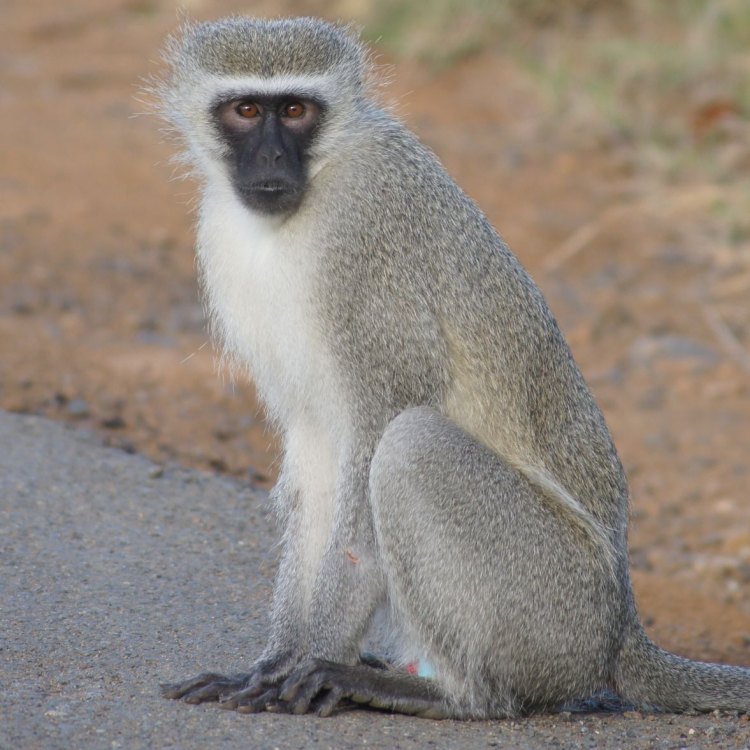
The Fascinating Vervet Monkey: A Primate of Many Talents
Disclaimer: The content provided is for informational purposes only. We cannot guarantee the accuracy of the information on this page 100%. All information provided here may change without prior notice.



